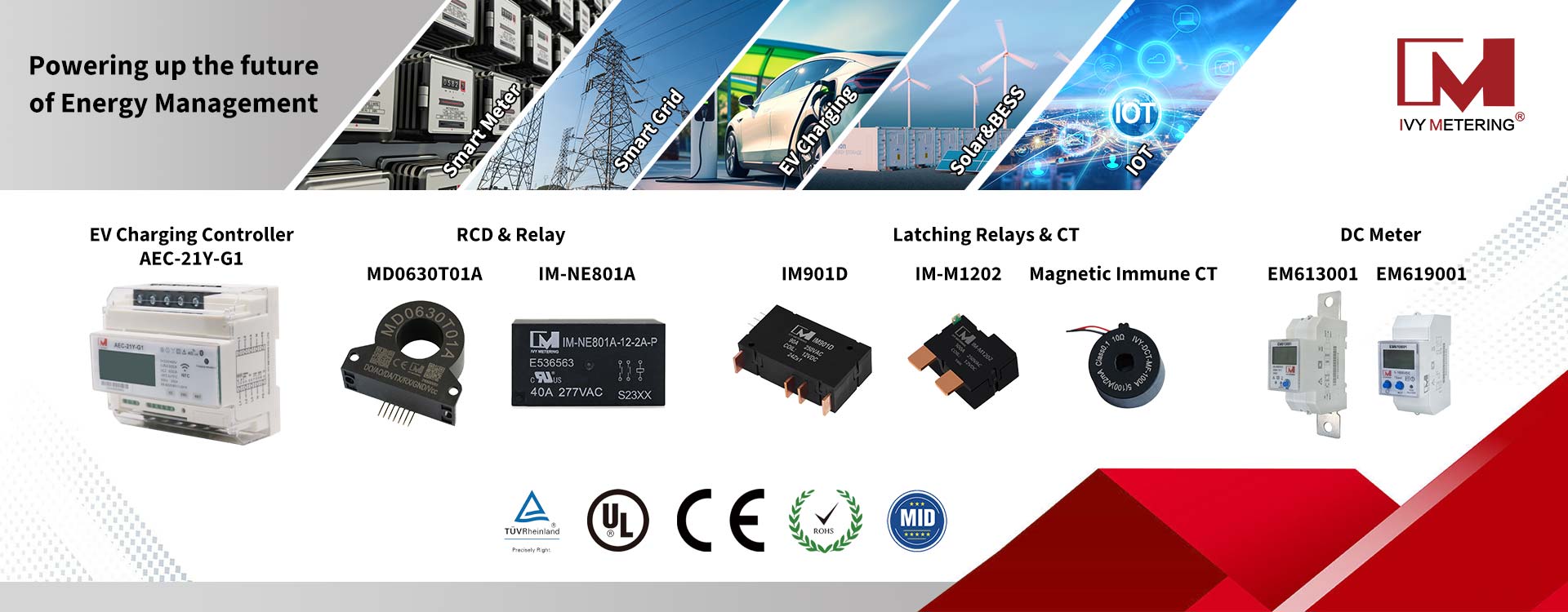6mA DC RCD for EV Charging Protection
When new energy vehicles receive policy support, market expansion, and usher in rapid development, charging piles have also entered a new stage of development and become an important part of supporting the electrification of vehicles. As the most important battery life tool for new energy vehicles, the number of charging piles has increased year by year and the continuous improvement of charging power has made more and more car owners gradually prefer to choose new energy vehicles, which can significantly alleviate the need for new energy vehicle owners to charge and recharge. Anxious situations such as prolonged periods of time. For the charging pile, it also bears the protective effect when the car is charging. The generation of leakage is an important factor in the occurrence of fire in the charging process of the car, so leakage protection is very important.
There are also some differences at home and abroad for the standards of AC charging piles.
1) Domestic standards for leakage protection requirements
For AC charging piles that also belong to the AC charging mode, GB/T 18487.1 [4] is also applicable. At present, most domestic charging pile manufacturers use A-type leakage protection or more cost-saving zero-sequence transformers (there are many low-power charging piles) to achieve their functions. However, due to the higher requirements put forward by domestic car manufacturers, the demand for leakage detection has been increased to the detection of A+DC 6mA. More and more domestic charging pile manufacturers are looking for solutions that can detect DC leakage. It is believed that under the promotion of the market, the relevant standards of the national standard will be further improved and updated.
The residual current protector of AC power supply equipment adopts type A or type B, which meets the relevant requirements of GB 14048.2-2008, GB 16916.1-2014 and GB 22794-2008.
(2) European standards for leakage protection requirements
As mentioned last time, for the IEC61851.1 implemented by the European standard, the requirements for leakage protection have been upgraded to the method of using B-type or A-type RCD+6mA smooth DC detection. At the same time, for the 6mA smooth DC detection device (RDC-DD), there is a separate standard IEC62955-2018 [6]. The standard makes detailed provisions for the A+6mA smooth DC scheme. Compared with the high cost of B-type RCD,
At present, most European standard pile manufacturers use the A+6mA method to meet the standard requirements.
In electric vehicle charging if the DC fault current is greater than 6mA, it could change the characteristics of a Type A RCD due to its core saturation, resulting in the type A failing to trip and a lack of detection of the DC fault. In this instance, the risk of electric shock is increased, and safety is compromised. IVY has launched a new 6mA DC sensor that is designed to detect a DC earth fault, which is more cost-effective than using a Type B RCD. In the event of a dangerous electrical fault, the sensor will output an alarm signal (by setting the leakage alarm value). This new 6mA DC sensor enables compliance with the updated IEC62955:2018 and reduces the cost of developing electric vehicle charging solutions.
IVY MD series residual current sensors are optimized for fast, low-cost assembly, combined with the highest product and production quality
Different Types
– Standard versions are designed for PCB mounting and wave soldering process.
– Customer specific design (e.g. press fit) upon request.
Product Advantages
Small, Flexible, Integration Design, Residual current range 2~100 mA
Switching output for 6 mA DC/30 mA (IEC) or 5 mA /20 mA (UL 2231)
Error(Fault) output (Integrated self-monitoring and test functions)
Digital Output, Measurement resolution DC 0.2 mA AC 0.3mA
Full load current up to 300A (1-phase) or 200A (3-phase)
AC DC Leakage Data Readable; Alarm Value Programmable; 3 Way Alarm Outputs
Robust mechanical design suitable for harsh electronic environments
Total system cost significantly reduced compared to type B RCCB
URAT Comm. with Modbus Protocol; Standard: EN 61000-6-3:2007+A1 ,EN IEC 61000-6-1:2019












